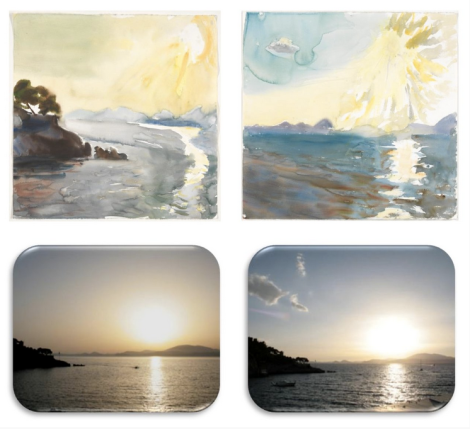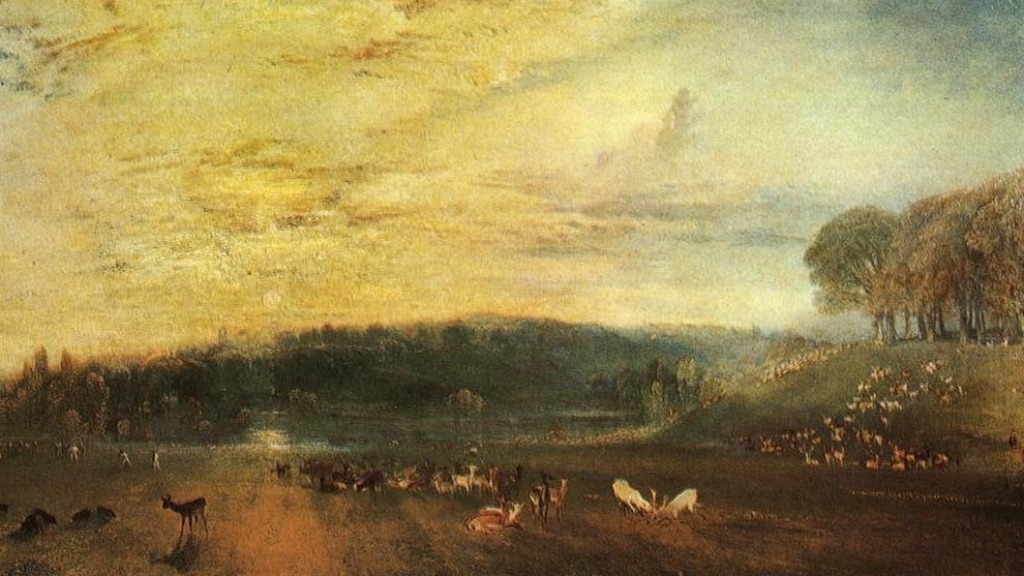Did you know you can tell how polluted the air is based on the color of the sunset? True fact! Sunsets can look redder for YEARS after a volcano erupts, due to the ash and gas in the atmosphere.
Armed with that knowledge (and a bunch more, because they’re really smart), German and Greek scientists examined sunset paintings from 1500 to 2000 to see whether the 50-plus volcanic eruptions during that time affected the colors used. Spoiler alert: They totally did!
“We found that red-to-green ratios measured in the sunsets of paintings by great masters correlate well with the amount of volcanic aerosols in the atmosphere, regardless of the painters and of the school of painting,” says [lead author Christos] Zerefos.
You can see this in the following paintings by P. Tetsis and photos by C. Zerefos, showing the island of Hydra in 2010. The column on the left shows more aerosol and dust in the atmosphere — the sky looks slightly redder and hazier — than the right column.

P. Tetsis (paintings) and C. Zerefos (photos)
So why does this matter?
Aerosol optical depth can be directly used in climate models, so having estimates for this parameter helps researchers understand how aerosols have affected the Earth’s climate in the past. This, in turn, can help improve predictions of future climate change.
Pretty cool — or scary, rather — that climate change affects everything from food to art.



